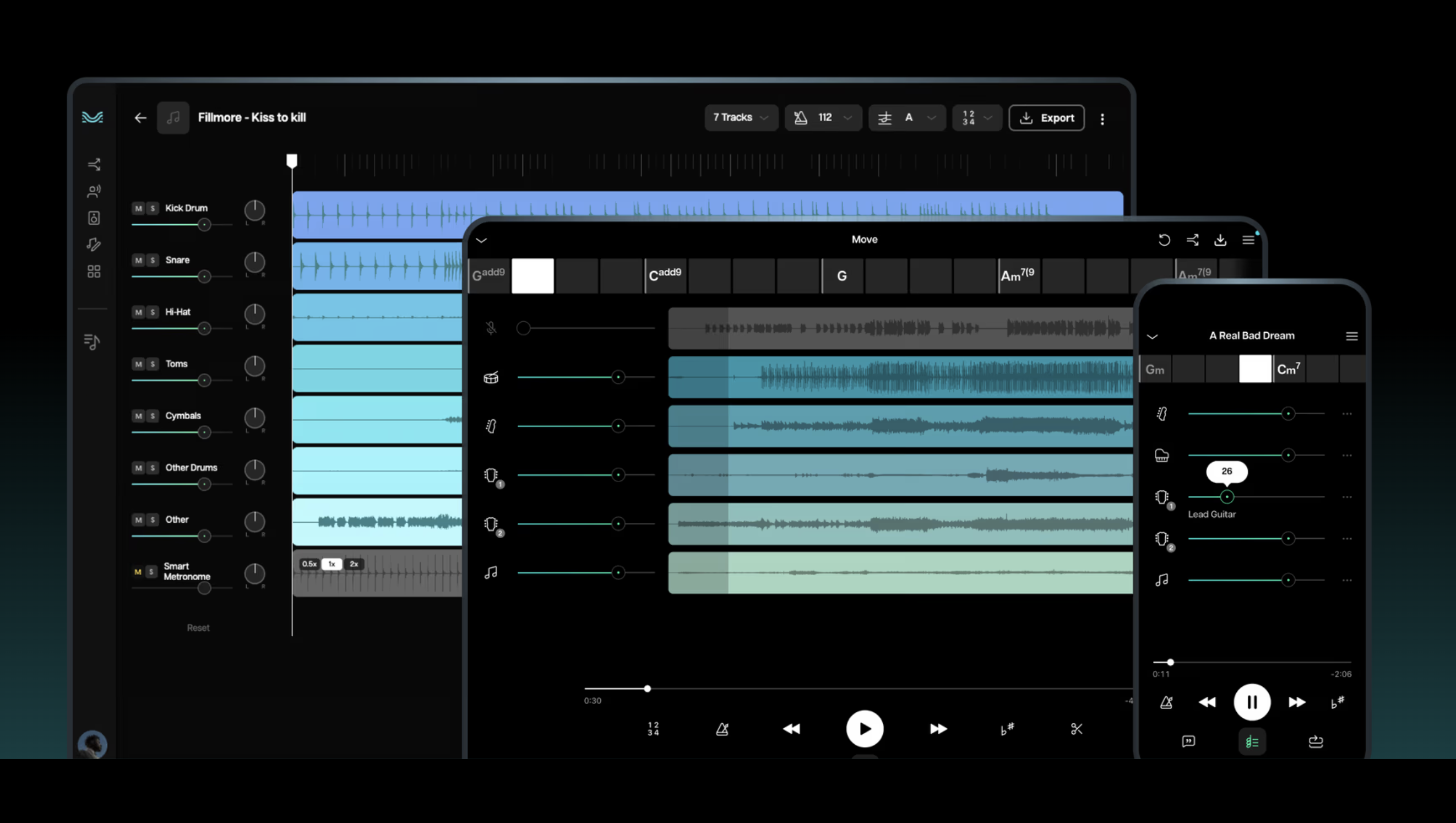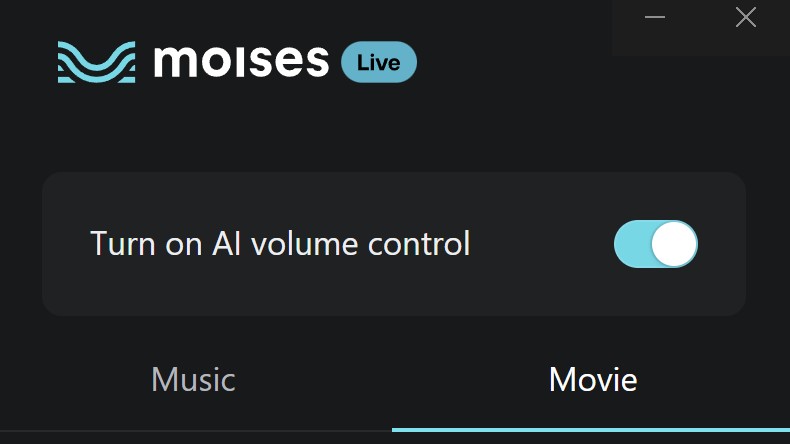I tried the Moises Music AI update and it's changed the way I experience music on my Windows laptop
Audio on a Windows laptop will never be the same

Amateur drummer Geraldo Ramos was onto something when he founded the AI powered audio developer Moises. The audio app quickly became a Big Thing, with over 50 million people (including music pros across the globe) now using it.
Alongside the large instalment base, Moises also achieved praise as a 2021 honoree in Google Play’s Best Personal Growth App and Apple’s 2024 iPad App of the Year.
Through the power of AI, the app grants users tools like audio separation, Chord and Lyric Detection and Speed and Pitch Control, among others. Taking its technology to the next level, the company announced Moises Live during SXSW in March.
Using Qualcomm’s Snapdragon Neural Processing Unit, the software allows users to isolate and manipulate vocals, instruments and other track elements on the spot and without needing any type of internet connection.
Moises Live actually integrates with the API of an operating system while opening pretty quickly. During my time with an ASUS Vivobook laptop that featured the software, I got to test some of the early technology.
What I experienced during my week with Moises Live was a glimpse at promising technology with the potential to unlock even more impressive real-world applications and effectively democratize mobile app music creation.

Loud Moises
The application opens from your desktop into a widget featuring two tabs; one for music and another for movies. I kicked things off by testing its real-time audio separation on YouTube, starting with Emma Bunton’s 2004 cover of Marcos Valle’s Brazilian classic Crickets Sing for Anamaria from her album Free Me. Even straight from a YouTube video, we were able to separate three layers, representing the vocals, guitar and instrumental.
Sign up for breaking news, reviews, opinion, top tech deals, and more.
It was really cool listening to just the vocals from Bunton – and then guitar by lowering the instrumental volume. OK, Crickets Sing for Anamaria is relatively simple in regards to its sonic layers. Another track I used was The Jackson’s Can You Feel It. I was able to separate Michael and Randy Jackson’s vocals, the guitar from Tito Jackson and other instruments like the horns and drums.
Though there was some slight distortion in the vocals, as if you can hear the volume separation processing the audio, it sounded pretty cool. I could see myself running an audio output to a recording device to create some instrumentals or use the vocals for a mash-up. It’s a really easy and simple way to strip vocals, guitars and other instruments at the moment. However, those songs are relatively easy for the technology.
A more interesting test was the popular grime single Rumble by Skrillex, Fred Again and rapper Flowdan. Here you could tell Moises Live had trouble keeping up with the fast paced song when it came to both instrumentals and vocals at the beginning, before becoming a lot cleaner in the audio separation. The same could be said for Little Simz’s Mood Swings track as well.
How about movies?
Switching from music to film was relatively easy, by clicking on the movie tab which took about three minutes to load. The first movie clip that I used was the “I Lied To You” sequence from Ryan Coogler’s blockbuster horror film Sinners. The movie tab allows users to tune the volume for vocals and the score. Though there was a bit of distortion between the song vocals and dialogue, it was really cool just hearing the instrumentation in the sequence that goes between various musical styles from blues, traditional African rhythms, rock and Hip Hop. With this technology, I have a feeling that karaoke for musicals and songs from a laptop could become a simple process.
“We are trying to prove the hypothesis of smart volume control,” said Moises AI’s Chief Technology Officer, Hugo Rodrigues.
That makes perfect sense, as Moises Live is shaping up to be a versatile tool with wide-ranging uses across music and media. For casual users, it offers a seamless way to turn any song or film scene into a karaoke-ready experience by isolating vocals and instrumentals in real time.
Musicians can use it to practice more effectively by focusing on specific instruments or vocals, tailoring playback to their needs. In terms of accessibility, the ability to isolate dialogue and score from movies enhances clarity for viewers with hearing challenges or language barriers.
Obviously, the taking and plagiarising of Warner Bros' original work is not the intended user case, but it's important to take notice of the fact that apps such as these may potentially unlock issues that weren't there before – as AI models in music have been known to cause.
Ohh… listen to the Moises
Looking ahead, the planned addition of real-time transcription could make Moises Live even more powerful, opening new possibilities for creators, educators and everyday users alike. Moises has an exciting roadmap of updates aimed at deepening its impact for both music and film users too. On the music side, future updates promise the inclusion of improved AI models plus support for even higher-quality separation, with the ability to extract more stems from a single track – building on the current support for over 16 stems, including isolated drum parts. Compatibility will also expand beyond ARM-based devices, making the tool more accessible to a broader range of users.
From my time with Moises Live, it’s easy to tell that the developer has cleverly built upon the success of its mobile app with real-time on-device audio manipulation. For the most part, it delivers. Though there are some flaws in the distortion that range from light to medium levels, the software shows some serious promise in making such a professional-grade audio tool accessible to pretty much anyone who uses it.
Even noting the fact that mine was an early trial of the technology, I think the software could become a new staple for creators and musicians looking for easy ways to augment audio. On a very basic level, this allows anyone to personalize volume levels without expensive software or hardware – and that's worth drawing to your attention.
You may also like

Ural Garrett is an Inglewood, CA-based journalist and content curator. His byline has been featured in outlets including CNN, MTVNews, Complex, TechRadar, BET, The Hollywood Reporter and more.
You must confirm your public display name before commenting
Please logout and then login again, you will then be prompted to enter your display name.